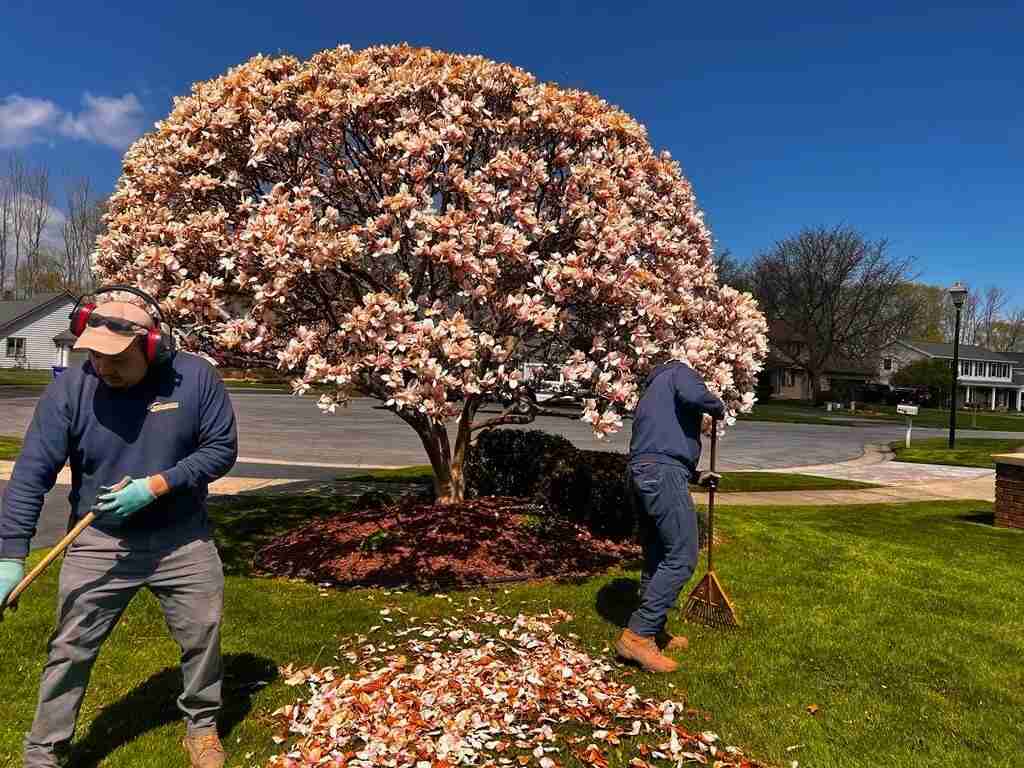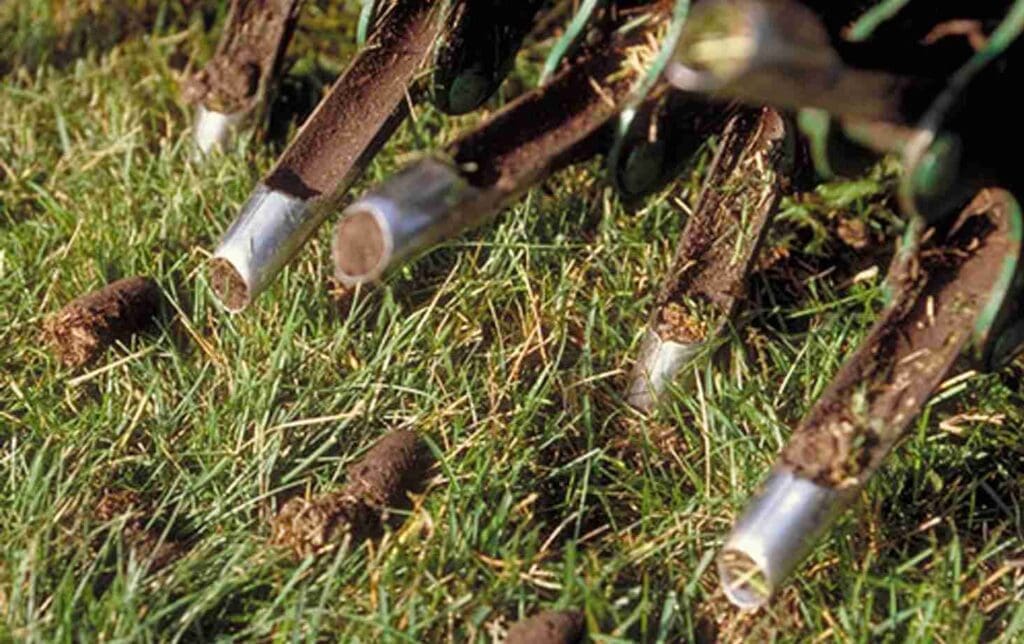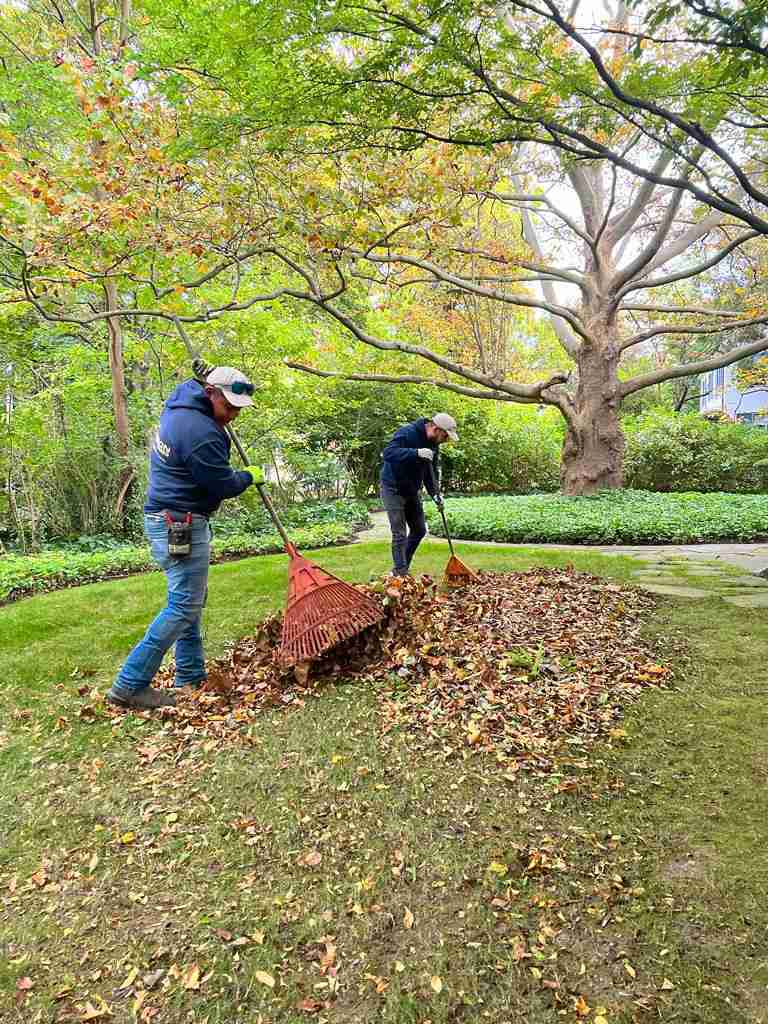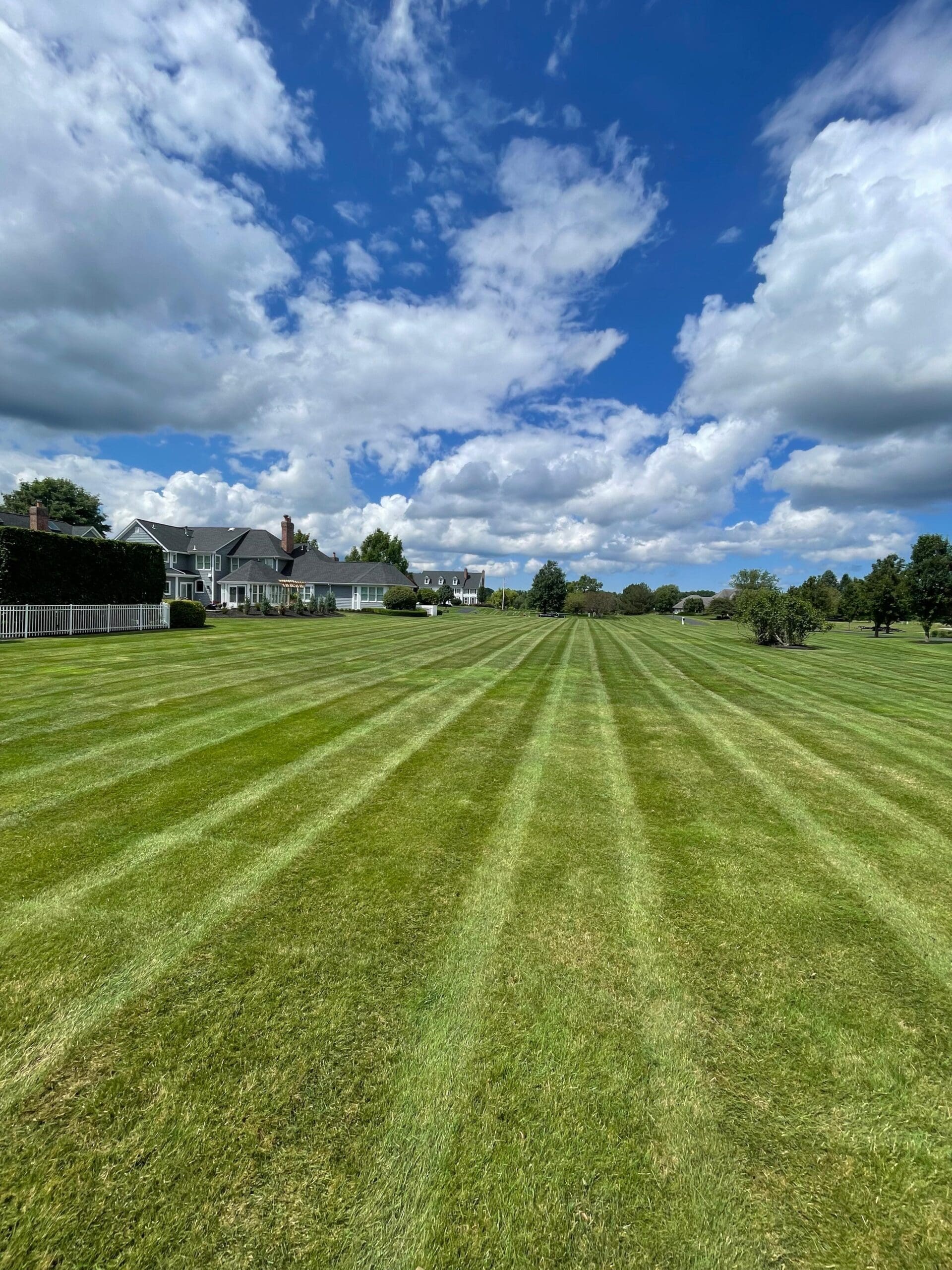Preparing for Spring with Fall Lawn Care
Preparing for Spring with Fall Lawn Care

When summer fades away and cooler temperatures take hold, many homeowners assume that fall lawn care season is winding down. However, fall is one of the most important times to invest in the health of your lawn. By preparing your yard during the fall, you’re setting the stage for a lush, green, and healthy landscape when spring arrives. At Benson Enterprises, we believe in proactive lawn care, and fall offers the perfect window to get your yard in shape for next year. These are essential fall lawn care practices that ensure your grass comes back stronger, healthier, and more resilient when the spring season returns.
Aerating Your Lawn
Compacted soil is a common issue in lawns, especially in high-traffic areas. Over time, foot traffic, rain, organic matter, and yard activities press the soil down, limiting the flow of air, water, and nutrients to roots of the grass. Aeration solves this problem by creating small holes in the soil, allowing it to “breathe” and absorb essential nutrients more efficiently.
Why is Aeration Important?
Aeration provides several benefits to your lawn to keep the grass healthy. This includes:
- Better absorption of water and nutrients
- Deeper root growth
- Reduced soil compaction
- Improved resistance to drought and disease
For best results, we recommend aerating your lawn in the fall when the weather is cooler, and the soil is still moist from seasonal rains.

Overseeding to Fill in Gaps
Fall is the perfect time to overseed your lawn. If you notice thin or bare patches in your grass, overseeding can help fill in these spots and thicken your lawn before the grass goes dormant for the winter. This involves spreading new grass seed over bare patches, encouraging new growth and strengthening the overall grass coverage.
Why Fall is Ideal for Overseeding
- Cooler temperatures reduce stress on young seedlings.
- Increased rainfall aids in seed germination.
- Overseeding in fall allows new grass to establish roots before winter, giving it a head start in spring.
Nourishing Your Lawn with Fertilizer
Feeding your lawn in the fall is critical for its health and appearance come springtime. After a long, hot summer, your lawn is likely low on essential nutrients, making fertilization a key step in rejuvenating it. Fall fertilization helps your grass recover from summer stress, builds strong roots, and prepares it for winter dormancy.
What Type of Fertilizer is Used in the Fall?
A slow-release, nitrogen-rich fertilizer is typically best for fall. Nitrogen helps promote root growth and ensures the grass has enough stored energy to survive the winter. Phosphorus and potassium are also important for root health and disease resistance.
Applying fertilizer in the fall gives your lawn the nutrients it needs now, but more importantly, it sets the foundation for spring growth.
Why Should You Consider Weed Maintenance in the Fall?
Weeds can be a major headache for any homeowner, and if left unchecked, they can rob your grass of nutrients, water, and sunlight. Autumn is a good time to tackle persistent weeds because many species, like dandelions and clover, are storing up energy for winter.
- Vulnerability: Weeds are actively absorbing nutrients in preparation for winter, making them more susceptible to herbicides.
- Less Spring Weeds: Tackling weeds now reduces their presence in the spring, minimizing competition for your grass.
By applying targeted weed control, you can keep your lawn free from unsightly weeds and ensure your grass has the best chance to grow strong and healthy in the coming year.
Adding Pre-Emergent to Your Lawn
One of the most effective ways to combat weeds is by preventing them from germinating in the first place. Pre-emergent herbicides target weeds at the seed level, stopping them before they can take root and spread throughout your lawn.
While pre-emergents are commonly associated with spring, fall is also a good time to apply them, especially for controlling winter annual weeds. These weeds sprout in the fall, lie dormant through winter, and become a nuisance in early spring.
Fall Pre-Emergent Benefits
- Weed Prevention: Prevents winter weeds from germinating and gaining a foothold in your lawn.
- Less Competition in Spring: Keeps your lawn weed-free, ensuring your grass doesn’t have to compete for water, nutrients, and sunlight.
- Early Start for Spring Lawn Health: By stopping weed growth before it starts, your lawn will be free to grow thicker and healthier in the spring without dealing with an influx of weeds.
Managing Leaves
While autumn leaves are beautiful to look at, they can become a nuisance for your lawn if left to accumulate. A thick layer of leaves on your grass can block sunlight, trap moisture, and create an ideal environment for pests and diseases. Over time, this can suffocate your lawn and leave it vulnerable to damage.
Yard cleanup is an important part of fall lawn maintenance, and it can make other practices easier when pesky leaves aren’t in the way. When the leaves begin to build up, it’s a good time to rake them up. This will leave your lawn clean and pristine, as well as free from disease and mold.

Mowing Your Lawn
Even though temperatures are dropping, your grass still needs regular mowing during the fall. However, as the season progresses, how your lawn is mowed will change.
Early in fall, mowing height will be the same height as summer, but as it gets closer to winter, mowing height is typically lowered. This prevents the grass from matting under snow and reduces the risk of diseases. It’s important to keep your lawn mowed until your grass has stopped growing. A well-maintained lawn in fall will transition smoothly into dormancy, setting you up for success in the spring.

Keeping Moisture Levels Consistent
While the weather is cooler in fall, it doesn’t mean your lawn doesn’t need water. Grass growth may slow down, but roots are still developing and require adequate moisture to stay healthy. That’s why it’s essential to maintain a watering schedule.
Fall Watering Essentials
These are a few important aspects to watering your lawn:
- Watering deeply and frequently encourages deep root growth.
- Adjusting your watering schedule accordingly and being mindful of rainfall.
- Watering in the morning allows time for evaporation and prevents fungal diseases.
By ensuring your lawn receives sufficient water during the fall, you’ll be protecting it from the stresses of winter and giving it a strong foundation for the next growing season.
Professional Fall Lawn Care Sets the Stage
The autumn season can be a busy time for lawn care, but you don’t have to do it alone. Benson Enterprise’s seasonal services cover everything from fall aeration to lawn maintenance. Our team of experts handles all the essential tasks—like overseeding, mowing, and weed control—so you can enjoy a thriving lawn without the stress. Whether it’s fall lawn aeration or yard cleanup, we’ve got you covered. We also offer year-round lawn care with our TurfCare Program to keep your grass looking its best in any season.
Contact us today to schedule your fall lawn care services or to learn more about our programs!
Call Today For A Free Estimate (585) 248-0452
Latest Posts
Ready to Start a Lasting Partnership?
We do more than complete projects. We build relationships that grow with your property. If you are ready to begin a landscape journey with a partner who will support your investment with honesty, expertise, and consistent care, we invite you to reach out.
Fill out our form or call our office today to begin your consultation.
